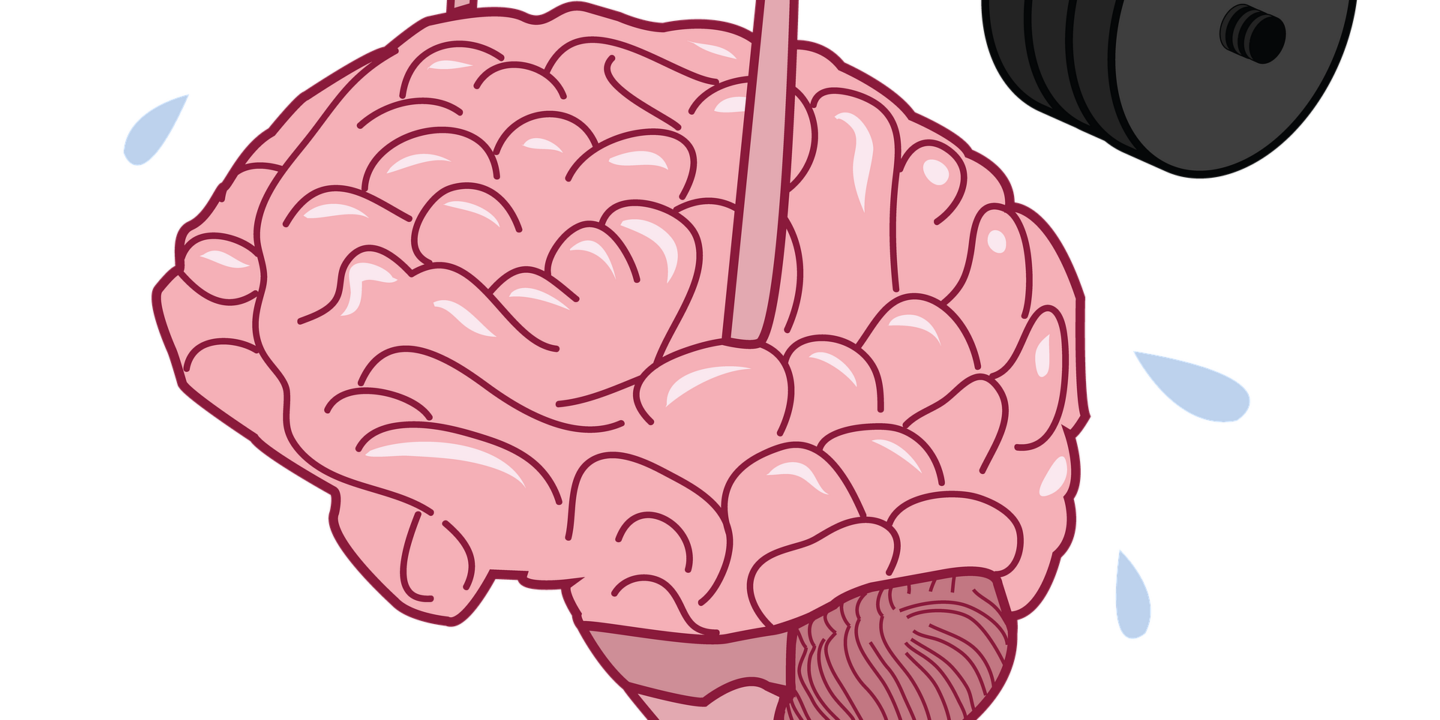
The COVID-19 pandemic has brought this fast-moving world to a standstill. The impact of this pandemic is massive, and the only strategy to curb the rapid spread of the disease is to follow social distancing. The imposed lockdown, resulting in the closure of business activities, public places, fitness and activity centers, and overall social life, has hampered many aspects of the lives of people including routine fitness activities of fitness freaks, which has resulted in various psychological issues and serious fitness and health concerns. In the present paper, the authors aimed at understanding the unique experiences of fitness freaks during the period of lockdown due to COVID-19. The paper also intended to explore the ways in which alternate exercises and fitness activities at home helped them deal with psychological issues and physical health consequences. Semi-structured telephone interviews were conducted with 22 adults who were regularly working out in the gym before the COVID-19 pandemic but stayed at home during the nationwide lockdown. The analysis revealed that during the initial phase of lockdown, the participants had a negative situational perception and a lack of motivation for fitness exercise. They also showed psychological health concerns and overdependence on social media in spending their free time. However, there was a gradual increase in positive self-perception and motivation to overcome their dependence on gym and fitness equipment and to continue fitness exercises at home. Participants also tended to play music as a tool while working out. The regular fitness workout at home during the lockdown greatly helped them to overcome psychological issues and fitness concerns.
Introduction
The COVID-19 pandemic is a massive global health crisis (Bavel et al., 2020) and rapidly spreading pandemic (Bentlage et al., 2020) of recent times. As compared to the earlier pandemics the world has witnessed, the current COVID-19 pandemic is now on the top of the list in terms of worldwide coverage. This is the first time the whole world is affected simultaneously and struck strongly in a very short span of time. Initially, the death rate due to COVID-19 was around 2%, which has now increased to around 4–6% (World Health Organization [WHO], 2020). The statistics does not look so severe, but the total number of cases and the rate at which these cases are increasing day by day make the situation alarming. Exponential growth in COVID-19 cases has led to the isolation of billions of people and worldwide lockdown. COVID-19 has affected the life of nearly each person around the world. The difference between personal or professional lives has narrowed due to work-from-home instructions, and people’s lives are revolving around these two due to the lockdown. People have also been pondering over a vital concern at home, i.e., the importance of their health and fitness.
Although imposing lockdown or quarantine for the population has been one of the widely used measures across the world to stop the rapid spread of COVID-19, it has severe consequences too. Recent multinational investigations have shown the negative effect of COVID-19 restrictions on social participation, life satisfaction (Ammar et al., 2020b), mental well-being, psychosocial and emotional disorders as well as on sleep quality (Xiao et al., 2020), and employment status (Ammar et al., 2020d). Announcement of a sudden lockdown of all services and activities, except few essential services, by the authorities has resulted in a radical change in the lifestyle of affected people (Jiménez-Pavón et al., 2020) and has severely impaired their mental health, which has been manifested in the form of increased anxiety, stress, and depression (Chtourou et al., 2020). The sudden changes in people’s lifestyle include, but are not limited to, physical activities and exercise. Ammar et al. (2020a) have reported that COVID-19 home confinement has resulted in a decrease in all levels of physical activities and about 28% increase in daily sitting time as well as increase in unhealthy pattern of food consumption. Similar results are also reported by other researchers (Ammar et al., 2020c; de Oliveira Neto et al., 2020) as well. Although these abrupt changes have influenced every individual, many people who were regularly following their fitness activities in gyms, or in the ground, or other places before the lockdown have been affected intensely. Closure of fitness centers and public parks has forced people to stay at home, which has disturbed their daily routines and hampered their fitness activities. While compulsion to stay at home for a long period of time poses a challenge to the continuity of physical fitness, the experience of hampered physical activities, restricted social communication, uncertainty, and helplessness leads to the emergence of psychological and physical health issues (Ammar et al., 2020a,c). Varshney et al. (2020) have found that psychological problems are occurring in adults while adjusting to the current lifestyle in accordance to the fear of contracting the COVID-19 disease. However, effective coping strategies, psychological resources, and regular physical exercise can be helpful in dealing with such health-related problems during the COVID-19 pandemic (Chtourou et al., 2020).
Rationale for the Present Research
Since the onset of this disease, people have been confined to their homes, which has not only resulted in various psychological health issues but also challenged their physical fitness and health (Ammar et al., 2020a,b,c,d; Chtourou et al., 2020; Xiao et al., 2020). Although this pandemic situation has led to the unexpected cessation of almost all the outside routine activities of all the individuals, it has profoundly hampered the physical activities of fitness freaks (those who regularly go to the gym for their physical fitness), as gyms and other such places have been shut down due to the lockdown. However, studies addressing the issues of fitness freaks, who used to spend a significant amount of time for regular workout in order to maintain their physical fitness, health, and appearance, seem to have found no place so far in the literature in relation to the current pandemic situation. Supposedly, the unique experiences of such people, their health issues, and the ways in which they have dealt with these issues during the COVID-19 pandemic have remained underexplored.
Also, it is well-known that the COVID-19 pandemic has made it difficult for people to adequately maintain their normal physical activity patterns at home (Ammar et al., 2020a). There are plenty of studies that have addressed the impact of COVID-19 on physical activities of the general public (Ammar et al., 2020a,b,c,d; Chtourou et al., 2020; Xiao et al., 2020), demonstrated the significant decrease in physical activities and exercise patterns, and illustrated its ill effects on physical and mental health status. There is also a growing body of literature that suggests strategies to encourage people to be involved in home-based exercises and fitness activities (Ammar et al., 2020a,b,c,d; Chtourou et al., 2020; de Oliveira Neto et al., 2020). However, all these studies were conducted in the earlier phase of the pandemic. There is a lack of studies investigating the way in which people have dealt with the problems arising from the COVID-19 pandemic and subsequent lockdown/home confinement. In fact, it would be interesting to explore how and to what extent people were able to follow and benefited from the workout at home advices. Therefore, the present research aims at
understanding people’s unique experiences during the period of lockdown due to COVID-19 and exploring the ways in which regular exercise engagements helped them deal with the psychological and physical consequences of home confinement.
Methods
In order to gain a rich and extensive understanding of experiences into people’s lives during this pandemic and their efforts to maintain a healthy lifestyle, a qualitative approach was adopted for the study. We used Interpretive Phenomenological Analysis (IPA) to delve into the participants’ perceptions and to provide a close picture of the participants’ unique experiences during the lockdown period.
Participants
A homogeneous sample of 22 participants was selected for this study. The criterion-based purposive sampling technique was used to identify and select the participants. We first contacted the gym owners/trainers and sought their consent to help us in the conduction of this study. Upon consent, we requested them to provide us with the details of their regular gym members who continuously go to the gym and do fitness exercises for at least 6 months prior to the imposed lockdown. Once the list was generated, the prospective participants were then connected by phone, were explained the purpose of the study, and were requested for their consent to participate. Those who consented for their inclusion in the study were then asked some questions based on the pre-decided inclusion and exclusion criteria for the study. On the basis of this information, those participants who met the inclusion criteria (i.e., those who were continuing fitness workout in their home or hostels and were following strict home confinement measures during the COVID-19 pandemic and subsequent lockdown) were further contacted and requested to provide an appointment for a telephone interview.
Implications and Future Suggestions
The present study shows that despite the initial experience of anxiety and fear and the lack of motivation to engage in physical exercise at home, fitness freaks were able to shift to home exercises and were greatly supported by social media uses and listening to music. One could argue that this study only included fitness freaks who find it difficult to detach themselves from physical activities for a long time, and this was probably the reason for their shift to home-based exercises. However, there is no doubt that the findings of this study have demonstrated that if performed regularly, physical exercise has the potential to mitigate the ill physical as well as psychological effects of the COVID-19 pandemic. The findings of this study, therefore, could be extended to the common public to also persuade them to engage in physical fitness exercises, which would result not only in a better physical health but also in an enhanced psychological health and well-being. The findings of this study strengthen the recommendations made by researchers and organizations (for details see Chtourou et al., 2020; World Health Organization [WHO], 2020) to engage in home-based exercises (including, but not limited to, aerobic activities, balance and flexibility exercises, and muscular strength and endurance training) for about 150–180 min per week; to use social media, music, and/or similar techniques to increase adherence to physical exercises; and to practice dancing and yoga to reduce stress, anxiety, and depression, and even improve the quality of sleep (Chennaoui et al., 2015; Chtourou et al., 2015). It is also noted that one should start physical exercise and its alternatives in a progressive manner and must adhere to his/her fitness levels for choosing the amount and intensity of these exercises.
Ethics Statement
All procedures followed in this study were in accordance with the APA’s ethical standards and with the Helsinki Declaration of 1964 and its later amendments. The patients/participants provided their written informed consent to participate in this study.
Author Contributions
HK, TS, and YA conceptualized the study. HK and TS prepared study protocols. HK collected data, conducted initial data analysis, and wrote the first draft. TS, SM, and YA finalized data analysis, reviewed, and commented on the draft manuscript. HK, TS, SM, and YA contributed to the preparation of the final draft. All authors contributed to the article and approved the submitted version.
Conflict of Interest
The authors declare that the research was conducted in the absence of any commercial or financial relationships that could be construed as a potential conflict of interest.









